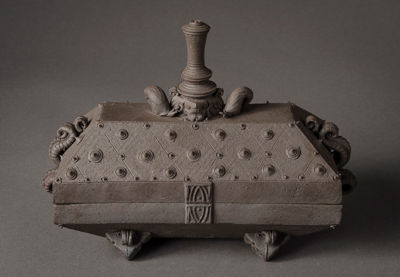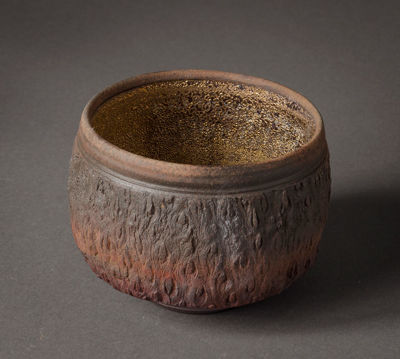Susan Harris
Title: Footed Jar with Bufonidae
Harris’ ceramics are semi-fictional representations of the artifact, translating a sense of mystery and exoticism — as well as intricate beauty in design — to representations such as this Footed Jar. A use of clay to represent metalwork developed from a technique known as reduction cooling, where the glazing process is bypassed to leave an sharp and rough exterior surface that appears akin to wrought iron. Such a transmutation offers the chance for reinterpretation and recharacterisation of ancient symbols Harris lifts from specific reference points, giving them contemporary logic, and she can be seen to playfully heighten the sense of camouflaged material identity by baking the jar in several different kilns — which imprint layers of metallic sheen upon the surface.
Title: Gastropod Fu
Harris’ ceramics are semi-fictional representations of the artifact, translating a sense of mystery and exoticism — as well as intricate beauty in design — to representations such as “Gastropod Fu”. A use of clay to represent metalwork developed from a technique known as reduction cooling, where the glazing process is bypassed to leave an sharp and rough exterior surface that appears akin to wrought iron. Such a transmutation offers the chance for reinterpretation and recharacterisation of ancient symbols Harris lifts from specific reference points, giving them contemporary logic.
Title: Tea Bowl
Harris’ appreciation for the ‘relic’ in ceramics finds an intriguing space between mimicry and a rekindling or redistribution of ancient cultural form, her range of earthenware heavily inspired by and referencing aspects of oriental and etruscan pottery. This tea bowl is particularly reminiscent of traditional Japanese Raku ware in format & style, the vessels’ exterior wall a fusing African and Eastern motif — whilst the interior is finished with an attractive metallic gold glaze.




